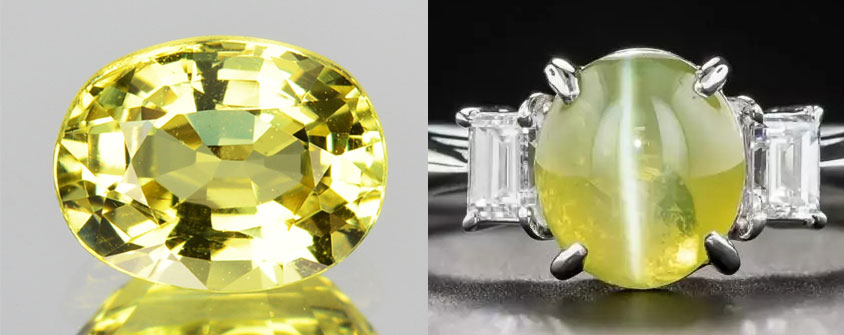Chrysoberyl gemstone
Home ➤ Encyclopedia of gems ➤ Chrysoberyl gemstonePhysical properties of chrysoberyl
| Hardness: | 8.5 out of 10 on the Mohs scale |
| Luster: | glass |
| Transparency: | transparent, translucent |
| Colour: | bluish green, brownish green, green, brown, grey, rarely reddish, colorless |
Characteristics of chrysoberyl
The precious stone chrysoberyl (cymophane, alexandrite) has been known to mankind for a long time. However, the stone received its separate name much later - only in 1781, when the chemical composition of chrysoberyl was finally determined. And before that, the stone was often confused with other stones (for example, with sapphires), or simply called beryl.

The name of the stone "chrysoberyl" in Greek means "golden beryl". And most of the chrysoberyls do have a characteristic golden yellow or greenish yellow color. Although chrysoberyl can sometimes be colorless, red, brown, purple and even blue.
Stones of good gem quality are quite rare. The most expensive and rare chrysoberyls are cymophane (a gemstone with the effect of a cat's eye) and alexandrite (an unusual gemstone that changes its color under different lighting conditions). There are chrysoberyls and with the effect of opalescence.
How much is chrysoberyl
Prices for chrysoberyl are quite high, as the stones are rare, and have good color and transparency. Ordinary gem-quality chrysoberyls with defects will cost from $80 per carat. Stones without defects will be much more expensive - up to $ 500 per carat. But the price rarely goes up. Only cymophane and alexandrite can be more expensive.
| ★ Alexandrite gemstone | |
| See also: | ★ Diopside gemstone |
| ★ Pearl gemstone |





